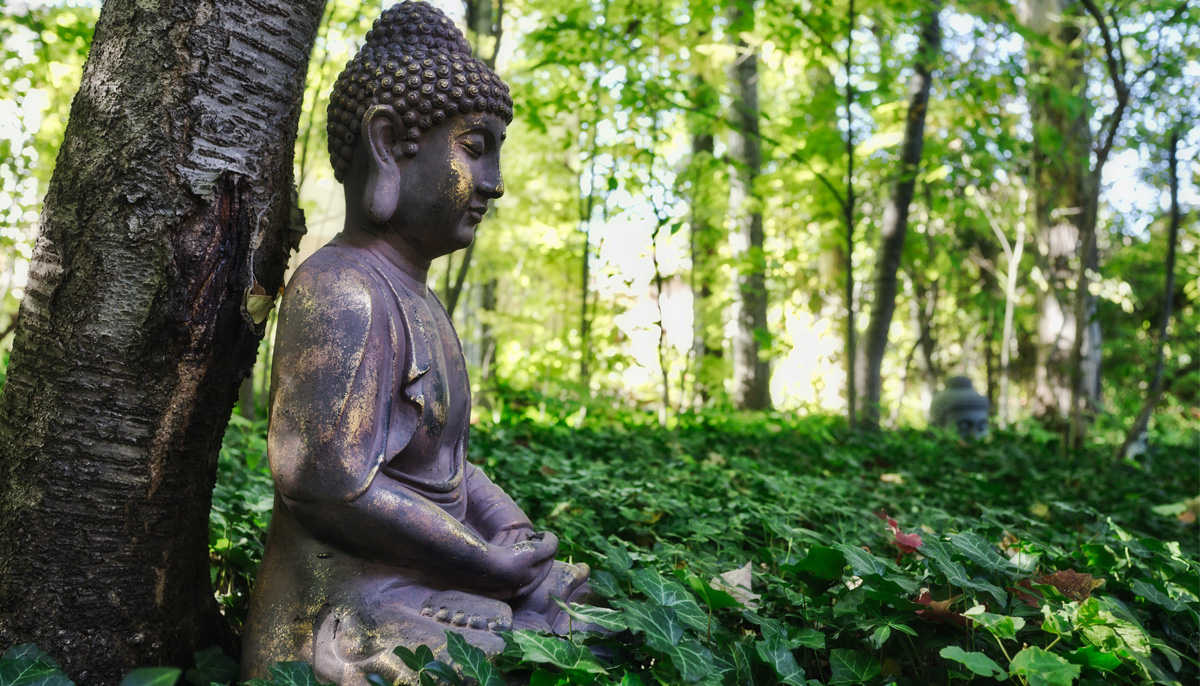The Great Discourse of Establishing Awareness (Mahasatipatthana Sutta) is one of the best-known documents of Buddhist scripture, mainly because the modern practices of Vipassana, or insight meditation, are based on it. Yet leaving aside its meditation instructions and doctrinal aspects, the discourse can be very helpful to anyone, especially during times when the precariousness of life is especially apparent.
The talk takes place when the Buddha was staying among the Kuru people, who had a reputation of being very socially and religiously developed — the Mahabharata takes place in Kuru. This means the Buddha didn’t have to lecture them on how to live, and could get right to it. He began by talking about the body.
What is the body? Just as if you were in a market looking at different bags of beans and grains and seeds, clearly identifying “these are lentils, these are sesame seeds, and this is rice,” in the same way you consider the body: “In this body there are hairs, nails, teeth, skin, flesh, sinews, bones, marrow, kidney, heart, liver, pleura, spleen, lungs, intestines, mesentery, stomach with its contents, feces, bile, phlegm, pus, blood, sweat, fat, tears, grease, saliva, nasal mucus, synovial fluid, and urine.” Observing your own body as made up of these parts, you think, “This is body!” That’s it, that’s what my body is. No more, no less.
Understanding what kind of mind you have in this moment, you think, ‘This is mind!’
And what happens to this body? The Buddha often advised people to go to a cemetery — back then, bodies were often left out in the open in a cemetery, rather than be buried or cremated. Because there, you see a body that has been dead for one, two, or three days, swollen, blue, and festering. You see a body being eaten by crows, vultures, dogs, jackals, and all kinds of creatures. You see a body reduced to its skeleton, held together by tendons, flesh, and blood. You see a body reduced to disconnected bones scattered in all directions — here a bone of the hand, there a bone of the knee, here a bone of the thigh, and there a bone of the pelvis. You see bones piled up in a heap more than a year old. You see bones having rotted away to powder. Seeing all of that, you understand, “Indeed, this body of mine is of the same nature, it will become like that and cannot escape it.”
After that rather morbid section about the body, the Buddha moves on to discuss sensations. It’s pretty simple: everything you feel at the physical level falls into one of three types of sensations: pleasant sensations, unpleasant sensations, and neither-pleasant-nor-unpleasant sensations. When experiencing one of these sensations, you think, “This is sensation!” That’s it, it’s just a pleasant sensation, or an unpleasant sensation, or a neutral sensation. No more, no less.
After that brief bit about sensations, the Buddha then talks about the mind, in the sense of what cast of mind one has. For instance, your mind can be craving or not craving. It can have aversion or be free of aversion. It can be scattered or collected. It can be expanded or unexpanded. It can be concentrated or unconcentrated. Understanding what kind of mind you have in this moment, you think, “This is mind!” That’s it, this is what my mind is.
Finally, the Buddha goes into talking about contents of the mind. This section takes up over half of the discourse, which is understandable, as the contents of the mind are subtle and complex — and they are also where suffering arises. Though suffering manifests in the body, in sensations, and in the mind, suffering actually arises in that intricate nexus where the senses come in contact with external objects and forms a mental content. After all, what causes suffering? Birth is suffering, old age is suffering, death is suffering, and sickness is suffering. So too are sorrow, lamentation, grief, and distress, but they do not cause suffering. Suffering is caused by craving, and, as the Buddha explains, craving arises wherever something is enticing and pleasurable.
Where is something enticing and pleasurable? Each sense in the world is enticing and pleasurable. Contact between the senses and sense objects are enticing and pleasurable. Sensations that arise from coming in contact with visible objects, sounds, tastes, smells, the body, and from the mind are enticing and pleasurable. Mental reactions to these objects are enticing and pleasurable, and the craving after these objects is enticing and pleasurable, and the thought conception of these objects is enticing and pleasurable, and the rolling in thoughts about these objects is enticing and pleasurable. That is, craving arises in these contents of the mind.
After establishing all of that, the Buddha goes through it all again, but this time he adds a twist: wherever craving arises is where craving can be eradicated and extinguished. That is, wherever something is enticing and pleasurable, is also where craving can be extinguished. Understanding how craving arises and how it can be extinguished and eradicated —understanding the intricate and subtle connection between the senses and sense objects and the craving they create upon coming in contact — you think, “These are mental contents!”
Admittedly, it’s extremely difficult to be aware of craving as it arises, much less eradicate it — each step of this mental process takes a fraction of a second. But it’s not too difficult to stop at times throughout the day, shift perspectives, and think, “This is body!” or “This is sensation!” or “This is mind” or “These are mental contents!” If we can do so, if we can understand we are just body, just sensations, just mind, and just mental contents, then we can’t get too wrapped up in the storylines of self that create suffering — the fear and anxiety that causes us to act in ways harmful to ourselves and to others.
Cultivating this understanding of what we are grounds us in reality. And during uncertain times like these, that’s exactly what we need.

